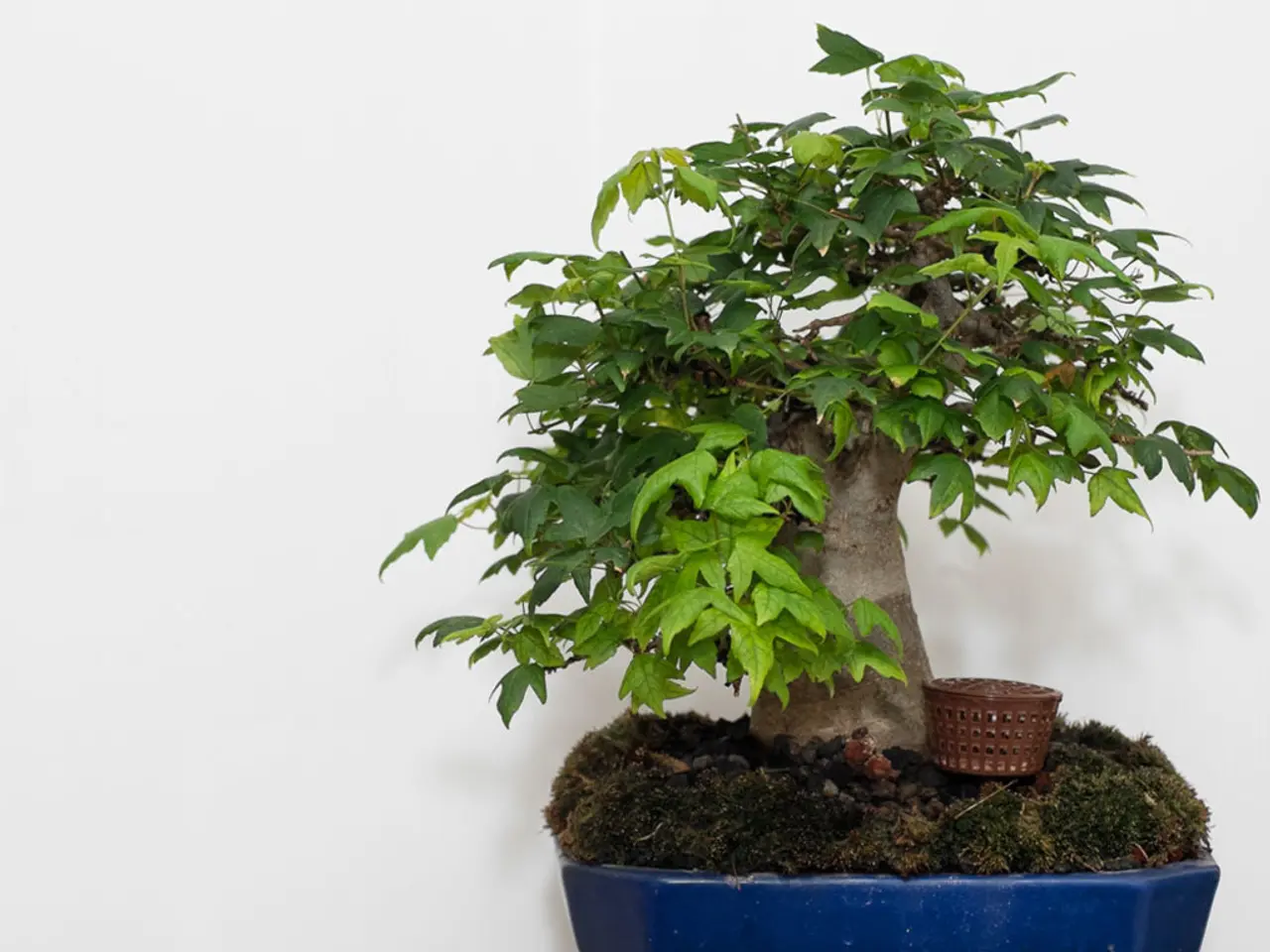Bonsai with Multiple Trunks: Deciding Suitable Species and Achieving Harmonious Structure
Creating a Stunning Multi-Trunk Bonsai: A Guide for Enthusiasts
A multi-trunk bonsai can be a captivating addition to any garden or home, offering a unique blend of beauty and complexity. Here's a guide to help bonsai enthusiasts create their own harmonious multi-trunk bonsai.
Choosing Compatible Species
The foundation of a successful multi-trunk bonsai lies in selecting species with similar growth rates, water, light, and soil requirements. Mixing species with drastically different needs can cause uneven growth and stress. Flexible trunks and branches, such as those found in juniper and jade, are essential for shaping the desired bonsai form without damaging the tree.
Considering Size and Leaf Scale
Species with small or compact leaves are preferable for bonsai to maintain aesthetic proportion. Smaller leaves also enhance the miniature appearance common to bonsai artistry.
Growth Habit and Environmental Compatibility
Consider species known for multi-stemmed or shrub-like growth forms, which naturally lend themselves to multi-trunk designs. Match species to the intended bonsai environment, whether indoor or outdoor, considering light exposure and humidity.
Caring for Your Multi-Trunk Bonsai
To maintain the health and vitality of your multi-trunk bonsai, provide adequate water and nutrients, monitor for signs of stress or disease, prune regularly, protect from extreme temperatures and weather conditions, and repot regularly.
Designing the Trunk Structure
When designing the trunk structure, consider visual flow, symmetry and asymmetry, proportion and scale, negative space, and unifying elements. The process of training trunks for natural fusion requires patience, attention to detail, and a deep understanding of the trees' growth patterns.
Harmonious Arrangement
A harmonious arrangement evokes a sense of unity and balance, drawing the viewer's attention to the interconnectedness of the trees. The artist must thoughtfully arrange the components to create a sense of flow and continuity, guiding the viewer's eye through the composition.
Fusion Techniques
While wire can be used to hold trunks together, it's not recommended for fusion, as it can constrict growth and cause damage. Instead, gentle binding with natural materials like twine or raffia allows for healthy growth and natural fusion.
Training the Trunks
Prune and train the secondary trunks to grow in harmony with the primary, creating a sense of balance and symmetry. To achieve harmony, identify the strongest trunk and allow it to take the lead, providing structural support for the others.
Patience and Time
The natural fusion of trunks in a multi-trunk bonsai typically occurs over several years, often taking 5-10 years or more, resulting in a strong and visually striking bond. Allow the trees time to settle and adjust, trusting in the natural process of growth and fusion.
Maintaining Your Multi-Trunk Bonsai
Multi-trunk bonsai typically require more maintenance than single-trunk, as each tree demands individual attention, pruning, and care. Pruning becomes an art form in multi-trunk bonsai, as strategically removing select branches and foliage enables the creation of visually stunning compositions that highlight the beauty of interconnected trunks.
In conclusion, creating a successful multi-trunk bonsai requires careful consideration of species compatibility, trunk flexibility, size and leaf scale, growth habit, environmental compatibility, and ease of care. Proper care and attention are crucial to maintaining the health and vigor of multi-trunk bonsai, as the interconnected nature of these trees increases their susceptibility to disease and pest issues. With patience, attention to detail, and a deep understanding of the trees' growth patterns, you can create a visually stunning multi-trunk bonsai that will be a source of joy and pride for years to come.
[1] Bonsai Empire [2] Bonsai Tonight
Exploring Complementary Interests
For those passionate about bonsai, exploring other areas of life such as lifestyle, fashion-and-beauty, food-and-drink, home-and-garden, and education-and-self-development can provide valuable inspiration and techniques that foster growth.
Fostering Resilience and Creativity
Just as a bonsai artist must cultivate patience and a deep understanding of tree growth patterns, adults can benefit from continuous learning in various disciplines to develop resilience, creativity, and a well-rounded approach to life.




